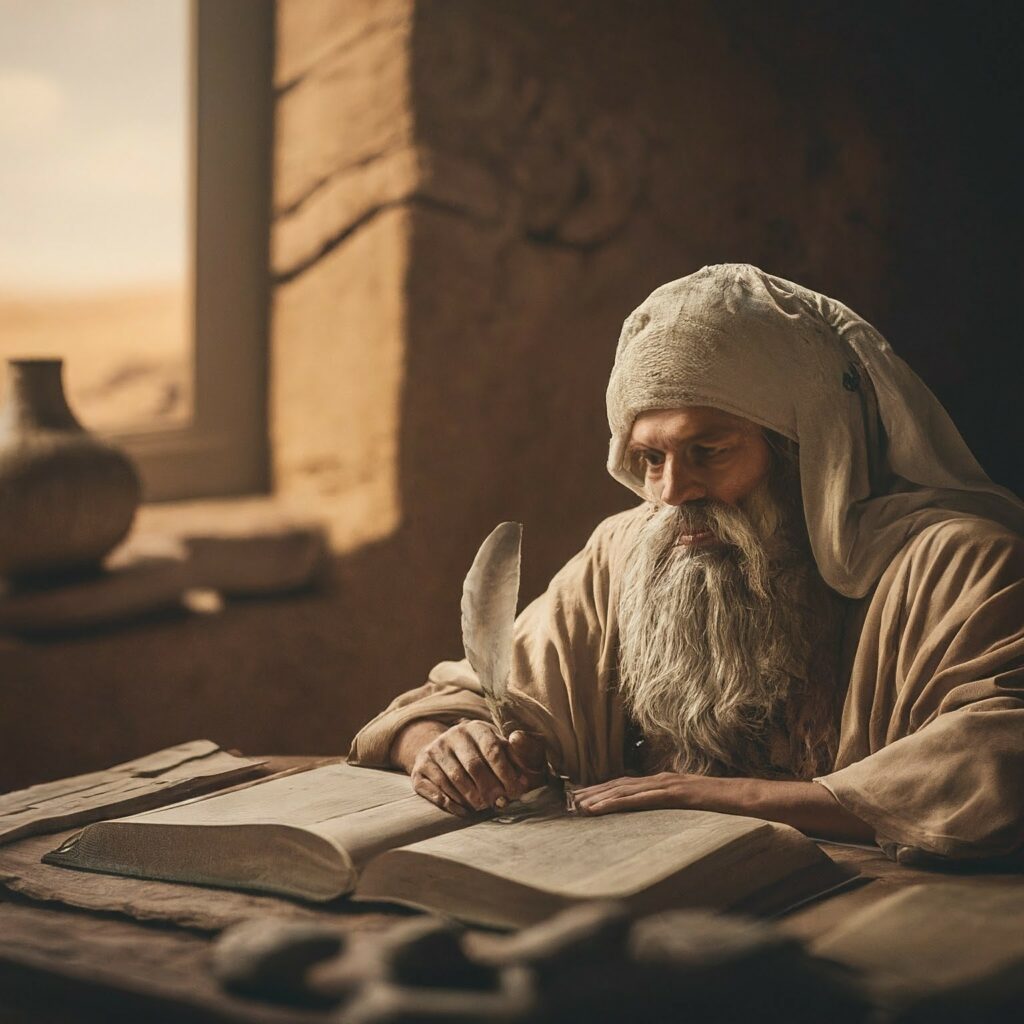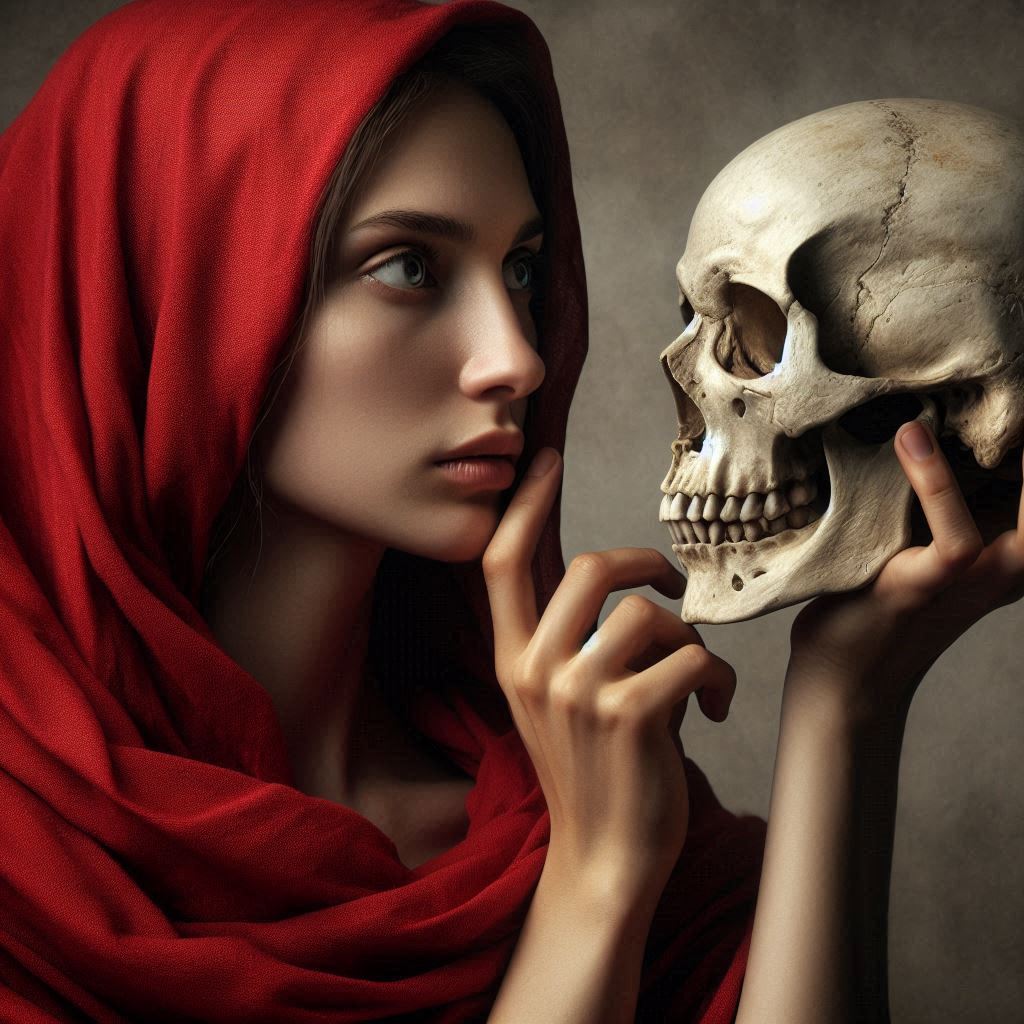St. Mary Magdalene, also known as Mary of Magdala, is one of the most important figures in Christianity due to her close connection with Jesus. St. Mary Magdalene’s hometown was “Magdala,” a village on the shore of the Sea of Galilee. This is why she is known as Mary of Magdala in the New Testament.

She’s been one of the hottest topics around Christendom in the last few decades. New discoveries about her life are leading academics and spiritual seekers alike to question assumptions we’ve made about her for centuries. Her image has undergone remarkable transformations over time—from a repentant prostitute to a wise sibyl, a profound mystic, a devoted wife, a supportive companion, a feminist symbol, and even the linchpin of a divine dynasty. In recent years, she’s been portrayed as the secret wife of Jesus and mother of his child, in part due to Dan Brown’s The Da Vinci Code. But is there any truth to this scandalous narrative?
The relationship between Mary Magdalene and Jesus is one of history’s most intriguing mysteries. There’s obviously a deeply intimate connection. Some people believe it was a divine friendship, and others think there was also a romantic connection. Early Christian texts from the first to third centuries suggest a complex relationship. This closeness has sparked centuries of debate and imagination that continue today!
In this post, we’ll explore:
- Why it’s so hard to get the story straight on Mary of Magdala
- The impact that Pope Gregory The Great had on birthing a centuries-old misconception
- The actual nature of Mary’s relationship with Jesus
- Why Mary of Magdala is such a supremely important figure in Christianity
The Messiness Of Biblical Composition
It’s important to understand that the Bible was not written by a single author at a single period of time. Rather, the texts that would become the New Testament were composed across several decades after the death of Jesus. The texts were originally written in Koine Greek, which, of course, was not the language that Jesus actually spoke.

Furthermore, it would then take centuries for the New Testament’s actual composition. This involved a series of decisions about which texts would be included, which would be excluded, the order in which they would appear, and so forth. And that’s just the New Testament. There are even more complexities if you factor in the Old Testament, which is also part of the Christian Bible.
Because the academic study of the Bible is so new, there is still a lot we don’t know about its history. But we do know that, given this complicated story, the Bible is not raw, unfiltered truth. It is the codification of memories about Jesus’ life and teachings which were not immune from human influence and editorializing.
The ambiguity of Mary of Magdala’s image today has a lot to do with all of that. There is the actual Mary of Magdala who had a close relationship with Jesus, there is the Mary of Magdala in the New Testament, and then there is the Mary of Magdala as interpreted by Christian authorities since then. It is also important to note that the decisions made in composing these texts were exclusively the work of men. So, we don’t exactly get Mary’s side of the story.
Pope Gregory The Great And The Great Misconception Of St. Mary Magdalene
One Christian authority figure who had a great impact on the way Mary of Magdala would be interpreted was Pope Gregory The Great of the late 6th Century. Gregory was born an aristocrat and served as the prefect of the city of Rome. After his father’s death, he gave everything away and turned his palace home into a monastery, becoming a lowly monk. The Black Plague swept across Europe, killing people left and right, including the previous Pope, which is how Pope Gregory came to inherit the position in 590. A year later, he would deliver a sermon that would have huge implications for nearly 1,400 years! It was the beginning of a stubbornly persistent portrayal of Mary of Magdala that lives on today.
Who Was Pope Gregory The Great?
When Gregory was elected as Pope, it was a really desperate time when people needed hope. Wanting to emphasize forms of worship that would ward off disease, Pope Gregory gravitated toward Mary of Magdala. She herself had been healed from a plague.
But here’s where things get tricky. The plague was so catastrophic in Europe at this time that it was commonly thought to be a sort of spiritual curse. And so, when Pope Gregory the Great invoked Mary of Magdala as an example of someone healed from plague, he also mistakenly conflated Mary with the woman in the Gospel of Luke who is described as sinful. This simple sermon is the root cause of Mary of Magdala’s reputation as a prostitute, which lives on even today.
Now, obviously, he was wrong. Mary wasn’t a prostitute. And I’m not excusing Pope Gregory’s sexist comments. But when people say Pope Gregory wanted to undermine women, it’s important to note that wasn’t really his intention. Maybe he didn’t even realize how much this misinterpretation of Mary would stick in people’s minds. But, of course, people love a good scandal! The idea that Jesus might have had such a close relationship with a prostitute was the scandal of all scandals!
And though this myth would persist for a very long time, Mary of Magdala’s image has been reshaped through every major era, from the times of Constantine and the Counter-Reformation to the Romantic period. Always, Mary is assigned a role that reflects the changing attitudes about women in society.
The Gospel Of Luke
Thankfully, in 1969, the Vatican released a statement that Gregory got things wrong, clarifying that Mary’s “demons” in the New Testament refer to emotional and spiritual troubles. Unfortunately, the lingering impression of Mary’s sinful life remains in many people’s minds, and that’s devastating to her legacy. So, it’s important to clarify what the Gospel of Luke—the book that Pope Gregory references—actually says.
The confusion about Mary of Magdala begins in the eighth chapter of Luke. It says:
“Jesus made his way through towns and villages preaching and proclaiming the Good News of the kingdom of God. With him went the Twelve, as well as certain women who had been cured of evil spirits and ailments: Mary surnamed the Magdalene, from whom seven demons had gone out, Joanna the wife of Herod’s steward Chuza, Susanna, and several others who provided for them out of their own resources.”
Luke 8:1-3
Notice that this passage creates a distinction between “the Twelve,” Jesus’ twelve male apostles, and these women. But why? Jesus didn’t have an inner circle that was only open to men. Mary was part of the innermost circle, the inclusion in which was determined by commitment and degree of understanding. Not by gender.

Gender (In)equality
In the ancient world women had very limited roles in society. They were considered the property of their father or husband and they weren’t allowed to learn the Torah or be witnesses in court. Keeping that in mind when we recall biblical stories helps us realize the political charge of Jesus’s egalitarian message. This is reflected in such statements as,
“There is neither Jew nor Gentile, neither slave nor free, nor is there male and female, for you are all one in Christ Jesus.”
Galatians 3:28
It’s also worth noting that the original teachings of Jesus are not the only examples of gender equality being championed by religious teachings. There are many others from the ancient world. In the Bhagavad Gita of Hinduism, for example, it is written,
“All those who take refuge in me, whatever their birth, race, sex, or caste, will attain the supreme goal; this realization can be attained even by those whom society scorns.”
The Bhagavad Gita, 9:32
In its purest forms, religion has typically advocated for all sorts of equality–including equality of all genders and sexes. It is the development and institutionalization of religions over time that determines whether this equality is put into practice or not.
In early Christianity, when the norms and assumptions of the followers of Jesus were written down, the equality of women is reflected in the letters of Paul. But later on—after the Gospels are written, but before the New Testament is defined as such—Jesus’ rejection of the prevailing male dominance was being eroded in the Christian community.
The Gospels themselves can be read to suggest this erosion because of their emphasis on the authority of “the Twelve,” who are all males. It’s annoying that the all-male composition of “the Twelve” is expressly used by the Vatican today to exclude women from ordination, but that’s a different topic…
Why St. Mary Magdalene Is Special
Ironically, though these later forms of scripture distinguish Mary of Magdala from the Twelve Apostles, she is sometimes called The First Apostle or Apostle to The Apostles. Sometimes she’s honored as one the founders of Christianity, along with Peter and Paul. Why?
Well, historians say that when the gospels DO agree, chances are higher that the story is historically accurate. ALL the gospels agree that Mary of Magdala was the only, or one of the few witnesses to both the crucifixion and resurrection.
In my next post, we’re going to dive into the full significance of Mary’s role in those two monumental events.
Frequently Asked Questions
Mary Magdalene is also called Mary of Magdala because she was born and raised in the town of Magdala. There are several Marys in the Bible, but Mary Magdalene and Mary of Magdala are the same Mary!
Upon witnessing Jesus’ resurrection, Mary was told to report what she saw to others. However, spreading this message and being a well-known close friend of Jesus made Judea a dangerous place for Mary to continue living. So, according to medieval writings, she fled to an area that is now in the South of France.
The true story of Mary Magdalene is that she was Jesus’ most loyal disciple and his close friend. She was the only person who was a witness both to Jesus’ crucifixion and his resurrection. These are well documented facts, in contrast to the speculative fabricated stories of her being a prostitute, Jesus’ lover, or the mother of his child.
Jesus and Mary Magdalene certainly had a very close relationship, but it was likely not the romantic or sexual relationship that is sometimes suggested. Rather, the closeness of their relationship has to do with Mary’s total devotion to Jesus. She was the only female disciple and is sometimes called “the first disciple” because of how unwavering she was in support of Jesus not just as a divine spiritual leader but also as her friend.
Paragraph
Paragraph


